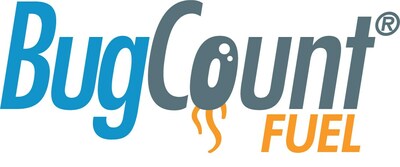Commodities
LuminUltra launches BugCount® Fuel, a revolutionary microbial test for fuels

FREDERICTON, NB, June 27, 2023 /PRNewswire/ – LuminUltra today announced the launch of BugCount® Fuel, an innovative, user-friendly test kit to quickly and accurately evaluate fuels for microbial contamination which can cause significant challenges for a range of industries including aviation, marine, and fuel handling.
Microbiological testing of fuel is critical for identifying and getting ahead of issues that lead to compromised performance, including clogged filters, worn injectors, fuel tank lining (pitting) corrosion, and even engine failure. The need for effective, fast microbiological testing solutions in industries including aviation is quickly increasing in the wake of growing passenger and freight transport demand, increased recreational travel, and a widespread adoption of green initiatives, such as sustainable aviation fuel (SAF).”We’ve heard from our partners in the industry that it’s more critical than ever for them to perform regular microbial testing on fuels, and to be able to get accurate, reliable results as quickly as possible” says Dr. Jordan Schmidt, Senior Director of Technology & Innovation at LuminUltra. “All of this fed into the development of BugCount® Fuel – filling that gap with a test that can be operated under-wing, providing results in minutes and with the accuracy needed to produce truly actionable results. Also, our in-house experts are available and keen to help in assessing the risk of microbial growth in fuels as this market continues to evolve.”A powerful new application of a proven technologyLuminUltra’s patented 2nd Generation ATP kit has been a gamechanger for microbial testing for industry since it was first introduced in 2003. Originally designed for bioreactor optimization and now used across a range of industrial applications, it combines the speed of ATP testing – results are returned in just 5 minutes – with modifications that make the test significantly more accurate and sensitive than traditional ATP tests. LuminUltra’s 2nd Generation ATP® is the only tool that allows the end user to quickly perform the test and compare the results across testing events, allowing long-term trend analysis and, ultimately, informed decision-making.BugCount® Fuel leverages this 2nd Gen ATP technology in an industry-specific test kit, enabling the user to operate the entire test on-site in just minutes. All required components are included and designed for use with minimal training or expertise. The product has already been successfully implemented in both commercial and general aviation applications, and this new kit is a series of improvements on an existing test kit that has been used in these markets for years. It allows for testing in accordance with ASTM D7687 and is referenced in the latest 6th Edition of the IATA Guidance Material on Microbial Contamination in Aircraft Fuel Tanks.”We’re incredibly proud of today’s announcement. It’s yet another proof of our success in delivering our core purpose, ‘to be your partner in microbial management'” says LuminUltra CEO, Pat Whalen. “We have a history of serving these markets and we’re already hearing very positive feedback on the updates we’ve made to our kits. We pride ourselves on our operational capabilities, manufacturing all of our solutions in-house, which ensures our ability to meet industry demand and turnaround times. We’re excited to put this critical tool in the hands of more customers to help more industries stay ahead of the challenges of unchecked microbiological activity.”For more information and to place an order, visit luminultra.com/fuel.About LuminUltraFounded in 1995, LuminUltra is a global leader in applied molecular biology diagnostics, with solutions and services that deliver accurate and actionable feedback in bioprocessing, biofouling, and biosecurity applications. With operations in six countries, LuminUltra serves dozens of Fortune 500 customers across more than 100 countries. In recent years it has been on an accelerated growth path, acquiring multiple companies after forming a partnership with XPV Water Partners. View original content to download multimedia:https://www.prnewswire.com/news-releases/luminultra-launches-bugcount-fuel-a-revolutionary-microbial-test-for-fuels-301863737.htmlSOURCE LuminUltra
Commodities
Oil prices rise; U.S. crude inventories plunge, Russia-Ukraine truce eyed
Commodities
India’s Reliance to stop buying Venezuelan oil over US tariffs, sources say
Commodities
Oil prices climb on Venezuela supply worries

 Forex3 years ago
Forex3 years agoForex Today: the dollar is gaining strength amid gloomy sentiment at the start of the Fed’s week

 Forex3 years ago
Forex3 years agoUnbiased review of Pocket Option broker

 Forex3 years ago
Forex3 years agoDollar to pound sterling exchange rate today: Pound plummeted to its lowest since 1985

 Forex3 years ago
Forex3 years agoHow is the Australian dollar doing today?

 Cryptocurrency3 years ago
Cryptocurrency3 years agoWhat happened in the crypto market – current events today

 World3 years ago
World3 years agoWhy are modern video games an art form?

 Commodities3 years ago
Commodities3 years agoCopper continues to fall in price on expectations of lower demand in China

 Economy3 years ago
Economy3 years agoCrude oil tankers double in price due to EU anti-Russian sanctions





























